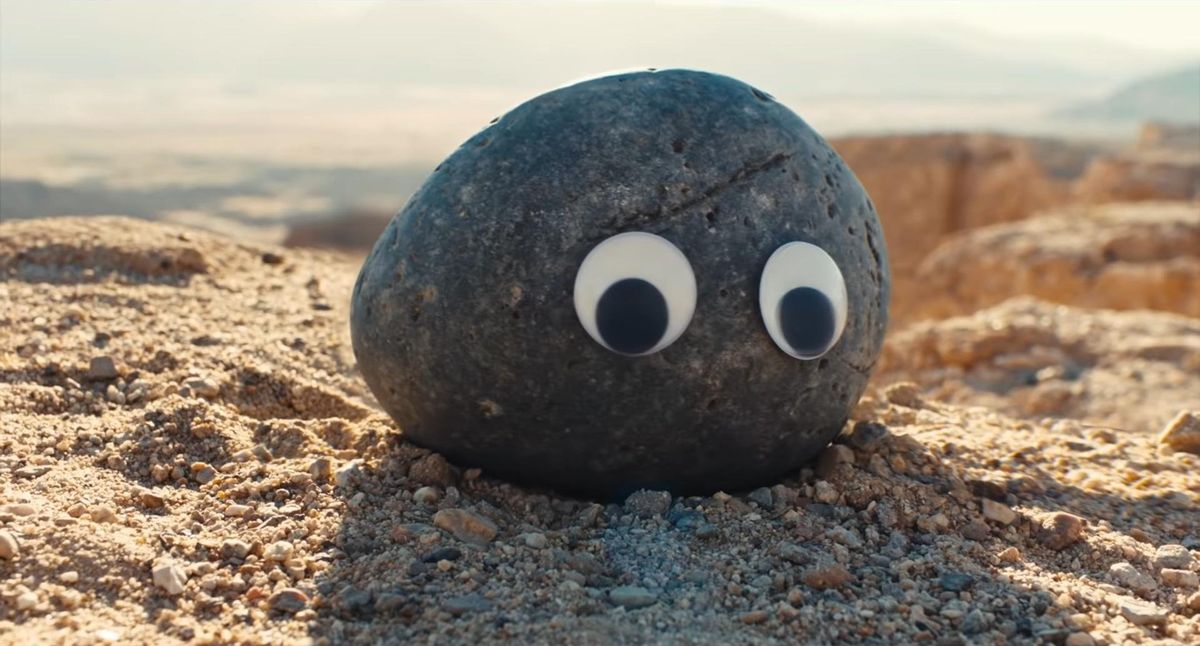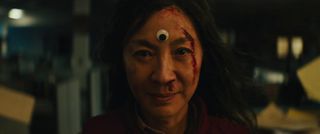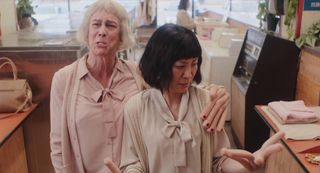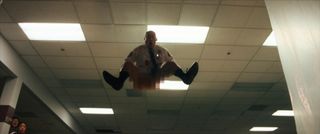Why I love that Everything Everywhere All At Once won big at the Oscars
It's a win for weird design and sheer ingenuity.

The 95th Academy Awards were held last night, where Everything Everywhere All At Once emerged victorious, with seven Oscars, for Best Picture, Best Director, Best Original Screenplay, Best Film Editing and three out of the four acting awards (Michelle Yeoh, Jamie Lee Curtis and Ke Huy Quan all won). And I’m thrilled about it. Why? Because Everything Everywhere is weird.
At an awards ceremony that habitually bestows the bulk of its awards on high-profile biopics, historical dramas, well-timed ‘issue’ films and polished blockbusters, it was delightful to see a film that features hot dog fingers, googly-eyed rocks, a fight scene featuring a butt plug, a dimensional void inside a bagel, and a visibly animatronic raccoon voiced by Randy Newman run away with all the glory. (Check out these Cinema 4D tutorials if you're feeling inspired).

Don’t get me wrong, the other nominees were all deserving, with impactful historical drama All Quiet On The Western Front winning multiple awards, Brendan Fraser’s powerhouse performance in The Whale rightfully celebrated, as well as Black Panther: Wakanda Forever’s slick costume work, Avatar: The Way Of Water’s next-level visual effects, and Top Gun: Maverick’s thumping sound design all getting worthy attention. But all these films, as slick, polished and accomplished they all are, couldn’t match Everything Everywhere in one key category, in my eyes (as well as those of Academy voters, it turns out): pure creativity.
Everything Everywhere All At Once, told both through its visuals and its narrative message, is about imperfection: the imperfection of life, people, careers, existence. And quite fittingly, it’s told through a lens of anarchy, sometimes gleeful, sometimes sober, sometimes anxious, but always genuine.

And what helped it get there for me was the sheer creativity of, well, everything, everywhere. The writer-director pair of Daniels Kwan and Scheinert didn’t have anything near the budget of the massive blockbusters they were up against, but through ingenious levels of invention and creativity, they not only closed that gap in resources, but also created an advantage of their own.
The recurring and hysterically funny Raccacoonie gag wouldn’t have been nearly as funny or effective as it was if the creature at its heart had been made with the finest CGI known to humanity.
The hot-dog finger storyline wouldn’t have been anything close to as funny initially and deeply heartfelt later on if the dangling, waving hot-dog prosthetics hadn’t been quite so… prosthetic.
Get the Creative Bloq Newsletter
Daily design news, reviews, how-tos and more, as picked by the editors.
The many fight scenes routinely revolved around surprising and awkward elements not usually seen in the more slick set-pieces of the MCU, none more so than the one where several people battle to to, erm, employ, a butt plug to hop between dimensions. But it’s that enforced creativity (as well as the frankly outrageous work by the choreography team) that makes them so memorable; using what you can find rather than simply renting out a giant greenscreen stage, have the stars jump around for a bit, and leaving the rest to the post-production team.
And I frankly can’t imagine a better way to portray the philosophical pondering of life and meaning than with rocks with googly eyes stuck to them, shot stop-motion style, in the desert.

It may not have won the Production Design, Costume Design or Visual Effects gongs (and was in fact only nominated for costumes, out of those three), but they all played a vital part in the film’s success. Everything Everywhere, for me, was about embracing and making the most out of what you have instead of wishing in vain for what you don’t, be it wealth, family, connections, or whatever else, and having that reflected in the way the film itself was made was key to how well it resonated with me, and clearly so many else.
The special effects team was five people who taught themselves how to achieve most of the things you see in the film off of YouTube tutorials. They, and the group of ridiculously talented and driven cast and crew didn’t have $200 million and teams of animators, previz specialists and compositors to call on, but still created something that has rightfully earned its place in film history.
If that’s not inspirational for the rest of us, who want to create art, crafts, design, music, pictures, films or words of our own, however small-scale that may be compared to the making of an entire feature film, then I don’t know what is.
Get inspired:
- 4 mind-blowing Super Mario character design facts
- How to edit videos: best tips for beginners
- Get started with ArtRage

Thank you for reading 5 articles this month* Join now for unlimited access
Enjoy your first month for just £1 / $1 / €1
*Read 5 free articles per month without a subscription

Join now for unlimited access
Try first month for just £1 / $1 / €1

Erlingur is the Tech Reviews Editor on Creative Bloq. Having worked on magazines devoted to Photoshop, films, history, and science for over 15 years, as well as working on Digital Camera World and Top Ten Reviews in more recent times, Erlingur has developed a passion for finding tech that helps people do their job, whatever it may be. He loves putting things to the test and seeing if they're all hyped up to be, to make sure people are getting what they're promised. Still can't get his wifi-only printer to connect to his computer.